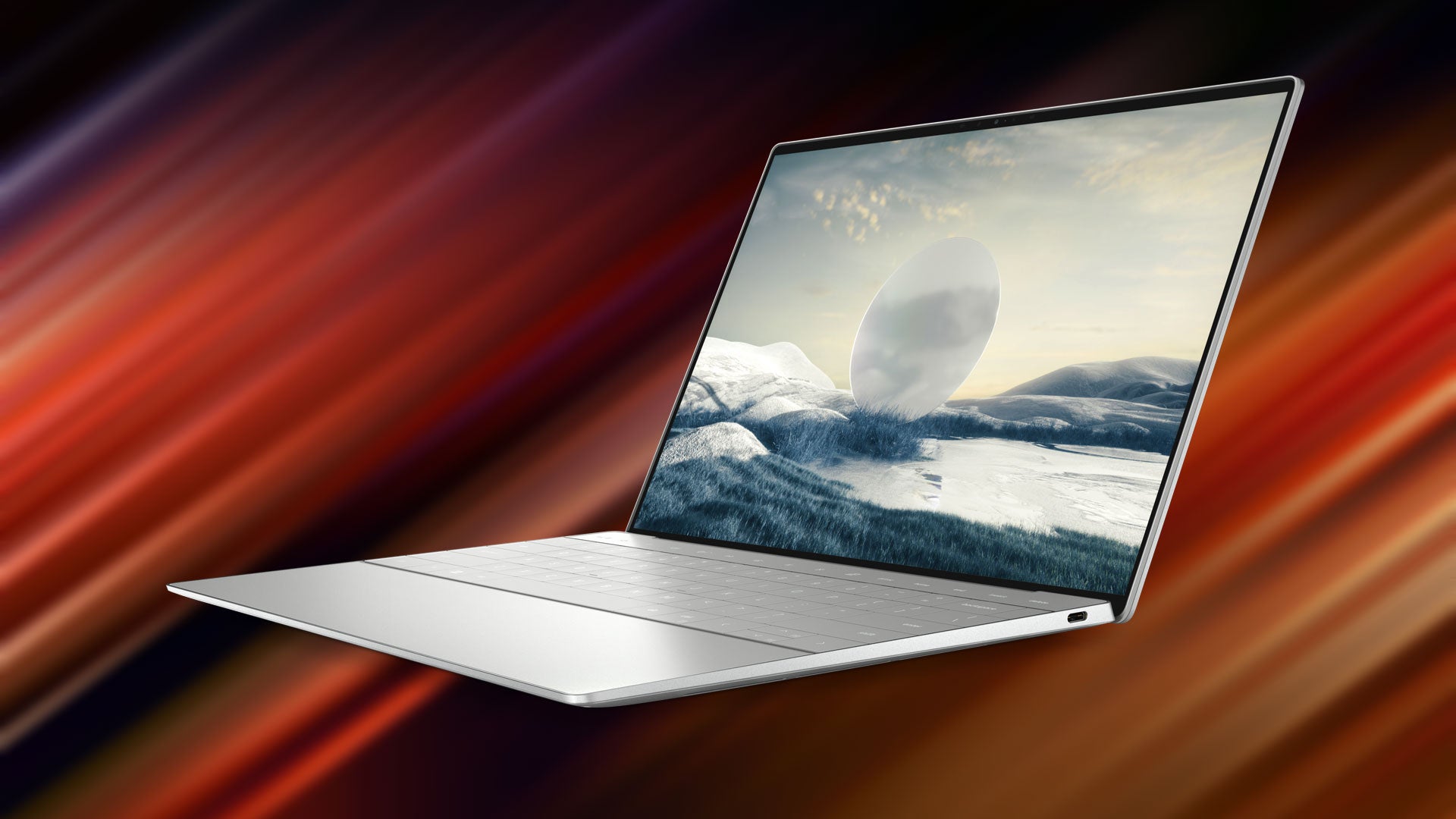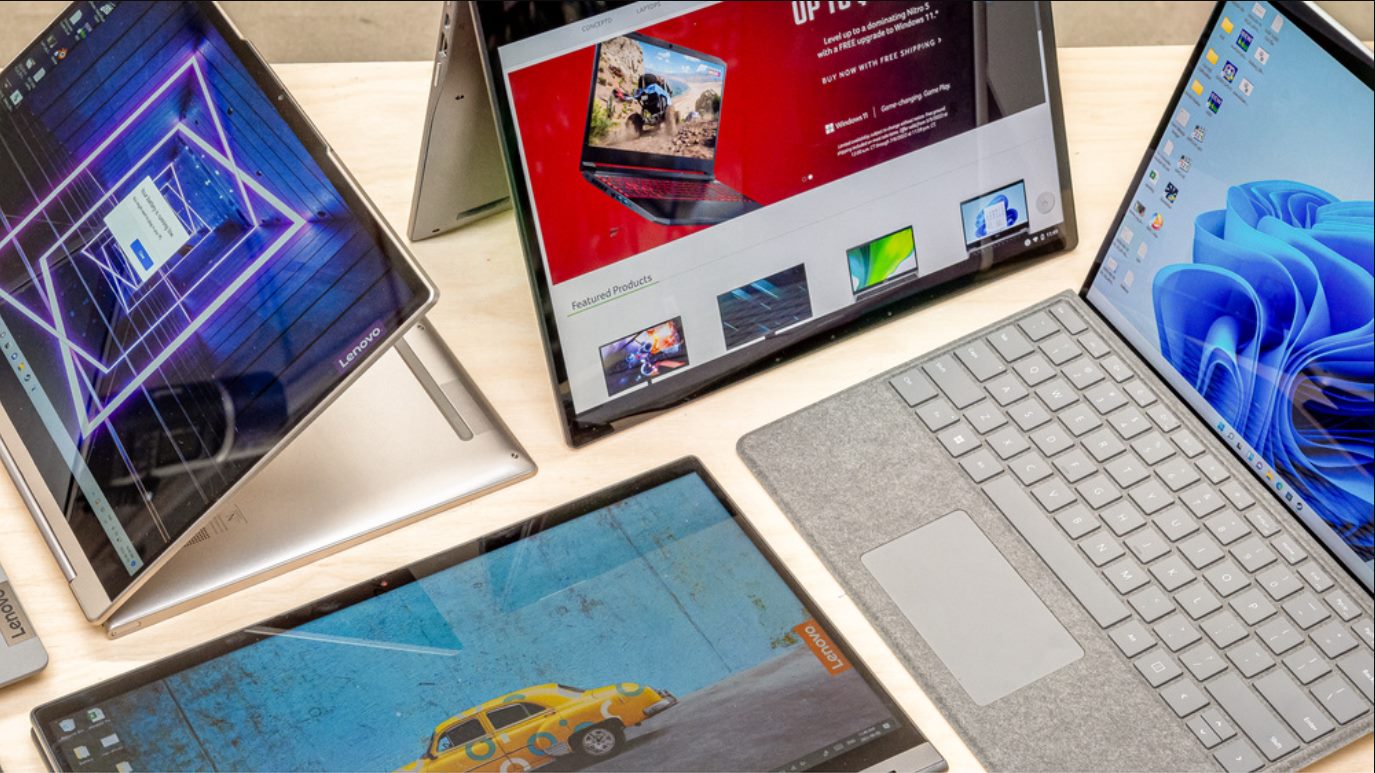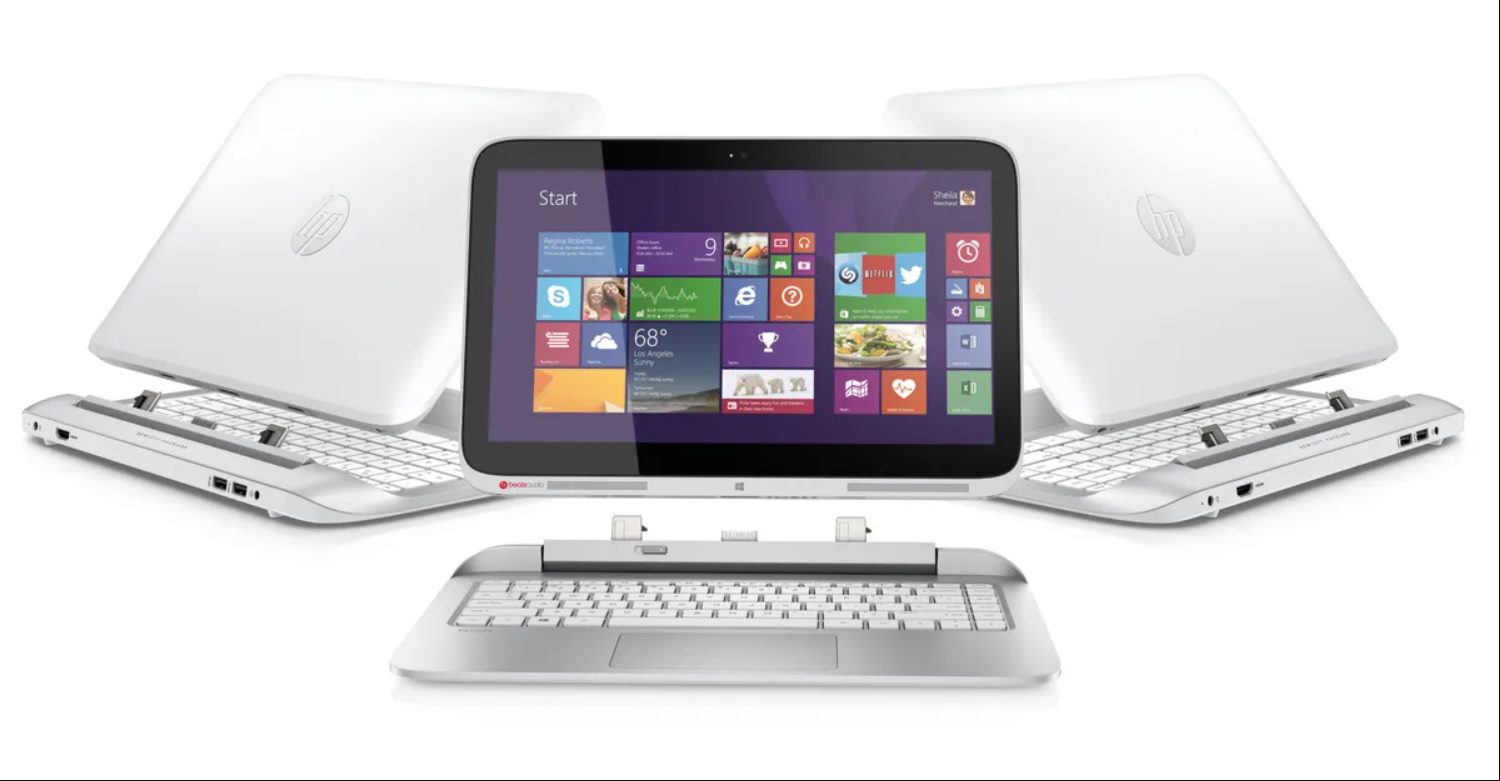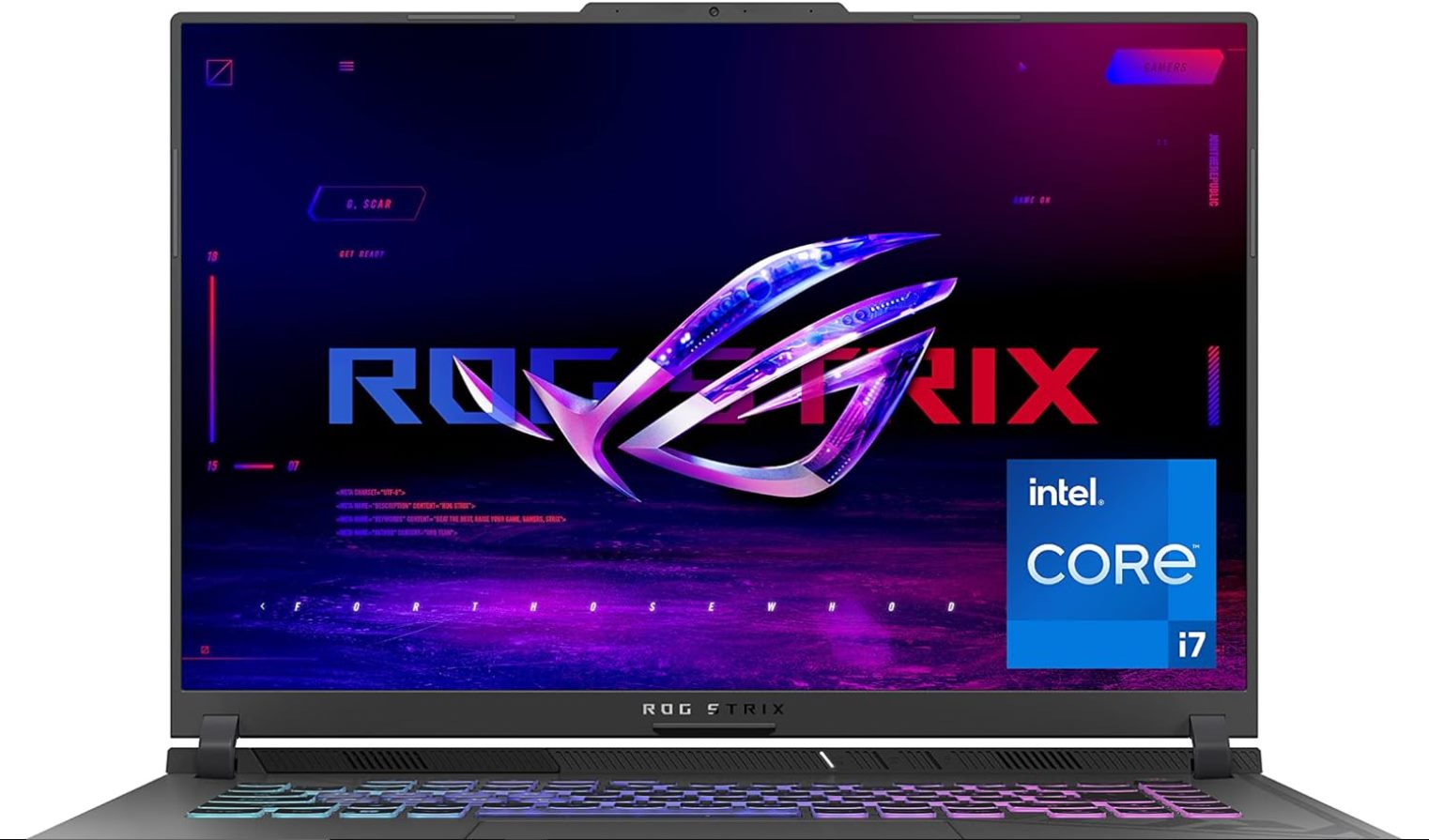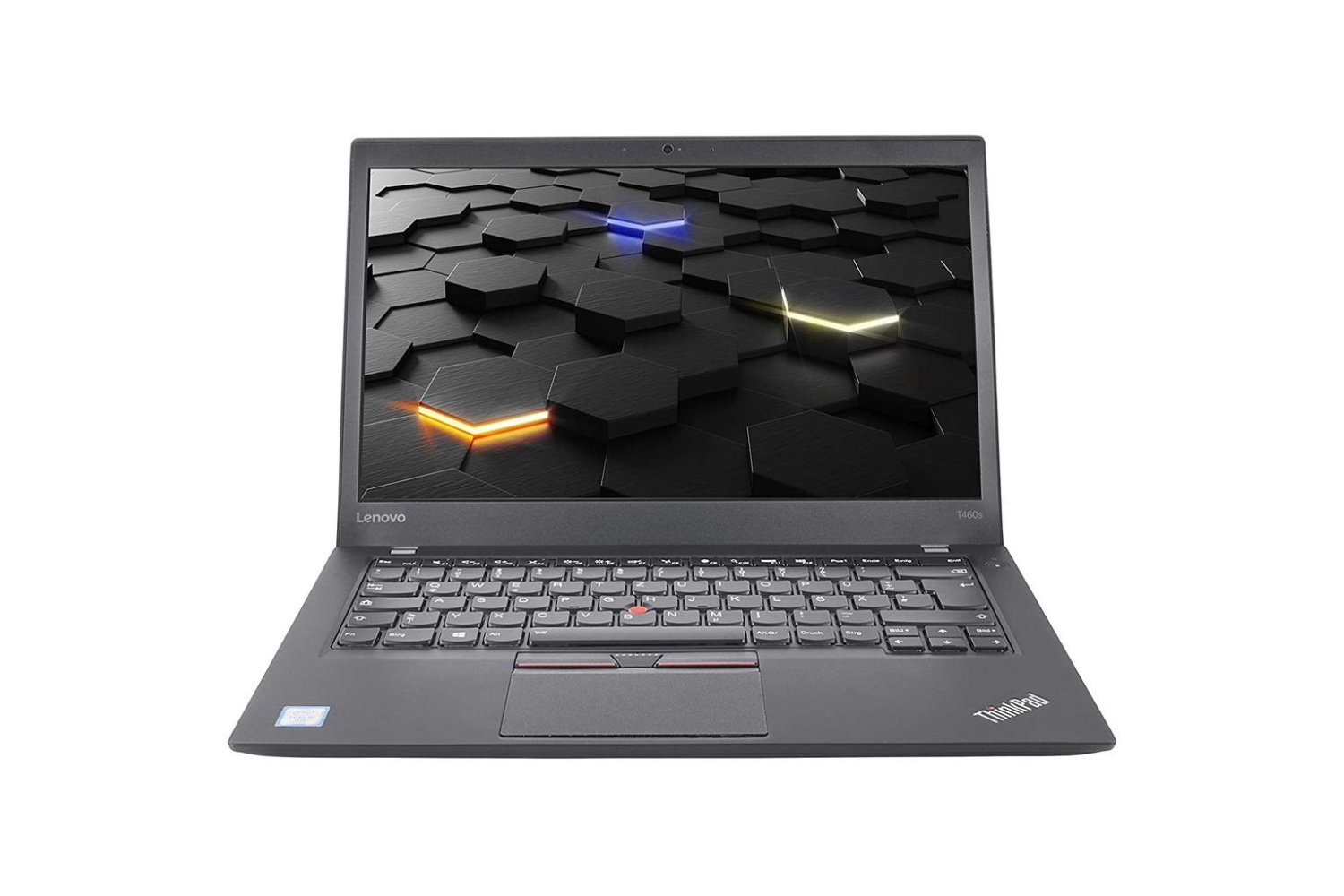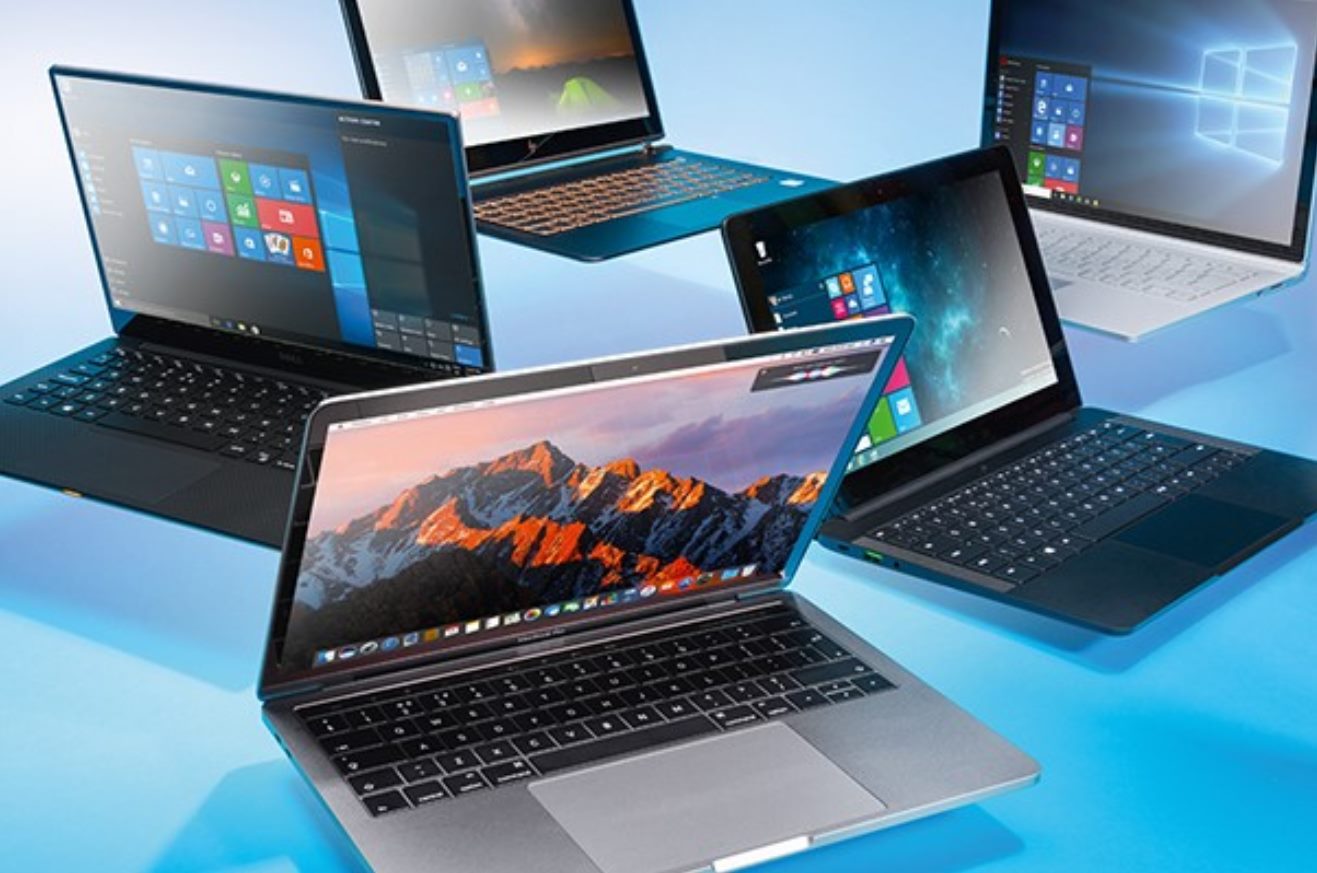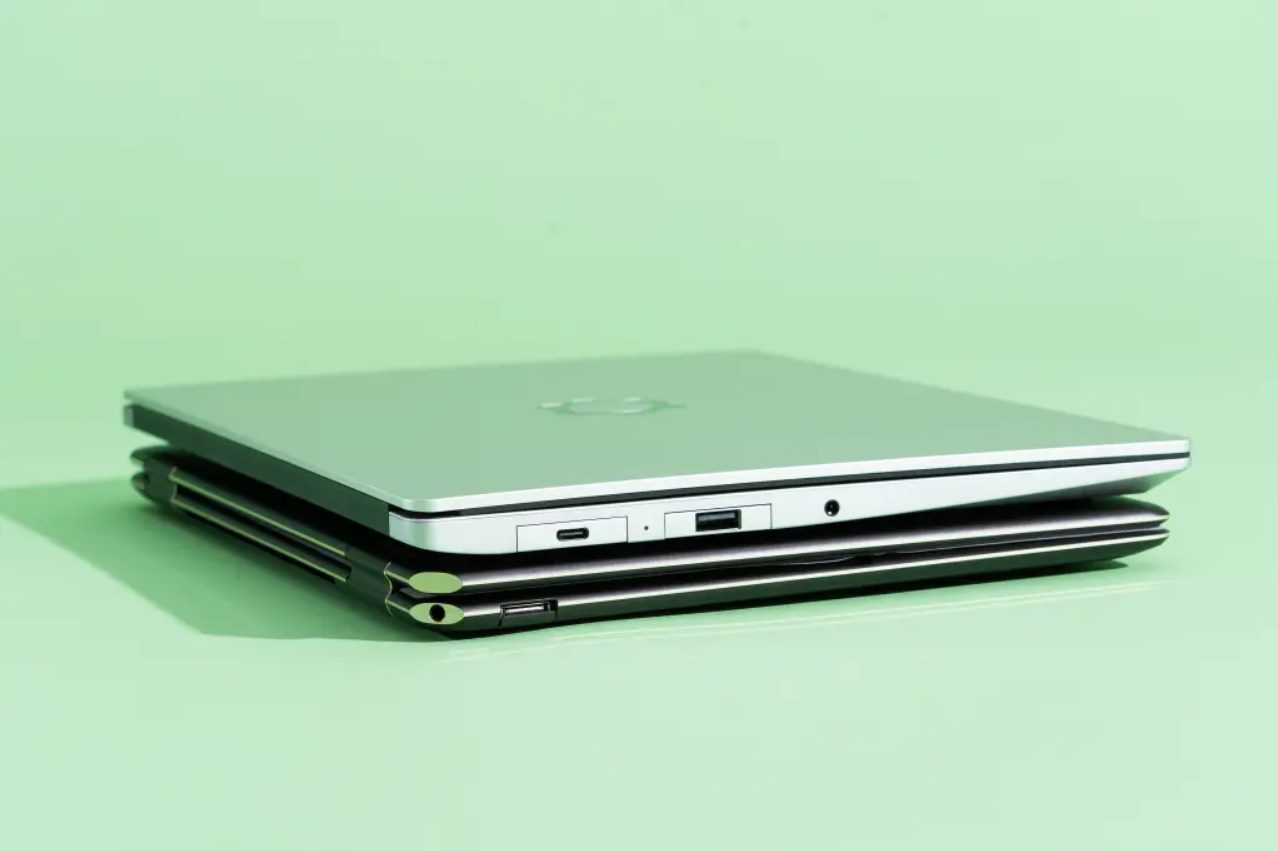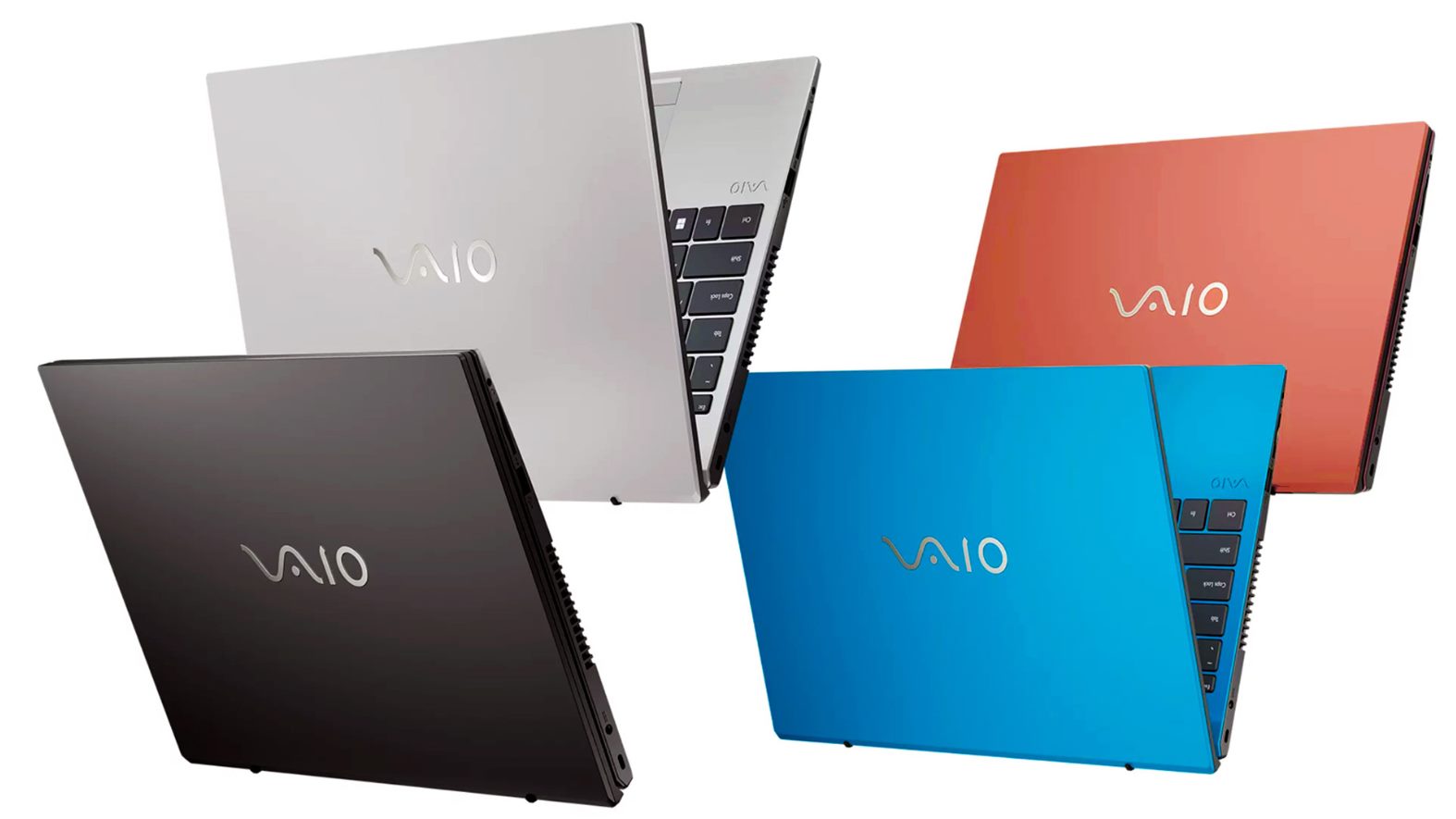Introduction
Ultrabooks have become increasingly popular in recent years due to their sleek designs, lightweight construction, and powerful performance. These portable laptops have revolutionized the way we work and play on the go. However, one aspect of Ultrabooks that still leaves room for improvement is the use of DDR3 RAM.
DDR3 RAM has been the standard memory technology for many years, offering decent performance and power efficiency. However, as technology advances and demands for faster multitasking and seamless productivity increase, it’s time for Ultrabooks to embrace the next generation of RAM – DDR4.
DDR4 RAM brings numerous benefits that can significantly enhance the overall performance of Ultrabooks. It offers higher data transfer rates, improved energy efficiency, and increased capacity, providing a smoother and more responsive computing experience. Additionally, DDR4 RAM allows for higher memory clock speeds, enabling faster data access and better multitasking capabilities.
Despite the clear advantages of DDR4 RAM, Ultrabooks continue to lag behind in adopting this new technology. Many Ultrabooks still rely on DDR3 RAM due to various reasons, such as cost considerations, compatibility issues, and the lack of widespread availability of DDR4 modules. However, with the rapid advancement of technology, it’s only a matter of time before Ultrabooks catch up and start utilizing DDR4 RAM.
What is DDR4 RAM and its benefits
DDR4 RAM, short for Double Data Rate 4 Random Access Memory, is the fourth generation of DDR memory technology. It is an advanced memory module that offers several key benefits compared to its predecessor, DDR3 RAM.
One of the primary advantages of DDR4 RAM is its higher data transfer rates. DDR4 RAM modules are capable of transferring data at speeds up to 3200 MT/s (megatransfers per second). This increased speed allows for faster data processing and improved overall system performance. Tasks such as loading applications, transferring files, and running multiple programs simultaneously become noticeably smoother with DDR4 RAM.
In addition to faster speeds, DDR4 RAM also offers improved energy efficiency. It operates at a lower voltage of 1.2V, compared to DDR3’s typical voltage of 1.5V. This reduction in power consumption not only contributes to longer battery life in portable devices like Ultrabooks but also helps reduce heat generation, resulting in a cooler and more reliable system.
Another significant advantage of DDR4 RAM is its increased capacity. DDR4 modules can support higher memory densities, allowing for larger RAM configurations in Ultrabooks. This means users can have more RAM available for resource-intensive tasks like video editing, gaming, and virtualization. With DDR4 RAM, Ultrabooks can handle complex applications more efficiently and smoothly, providing a better user experience.
Additionally, DDR4 RAM allows for higher memory clock speeds, which determine the rate at which data can be accessed from memory. The increased clock speeds of DDR4 RAM modules enable faster access to data, resulting in reduced latency and improved system responsiveness. This is particularly beneficial in scenarios that demand quick data retrieval, such as gaming or running resource-hungry software.
Overall, DDR4 RAM brings significant performance enhancements to Ultrabooks. Its faster data transfer rates, improved energy efficiency, larger capacity, and higher clock speeds make it a compelling upgrade from the older DDR3 RAM. As Ultrabooks continue to evolve, the adoption of DDR4 RAM is crucial to ensure optimal performance and keep up with the ever-increasing demands of modern computing.
Current usage of DDR4 RAM in laptops and desktops
While DDR4 RAM has been available for several years now, its adoption in laptops and desktops has been relatively slow. The transition from DDR3 to DDR4 has been gradual, with DDR3 still being the predominant RAM technology in the market.
Desktop computers, especially high-end gaming rigs and workstations, have been quicker to embrace DDR4 RAM. These systems benefit from the increased data transfer rates and larger memory capacities offered by DDR4, allowing for smoother multitasking, faster application loading times, and improved overall performance. DDR4 RAM also works well with new processors and graphics cards, maximizing the system’s potential for gaming and resource-intensive tasks.
In contrast, laptops have been somewhat slower in adopting DDR4 RAM due to several factors. One of the main reasons is the higher cost associated with DDR4 memory modules. Since DDR4 RAM is newer and offers improved performance, it tends to come at a higher price point compared to DDR3 RAM. This cost difference can be significant, especially for budget-friendly laptops.
Another factor affecting the use of DDR4 RAM in laptops is compatibility. DDR4 memory modules require a different physical connector, known as DDR4 SODIMM, compared to DDR3’s standard SO-DIMM. This means that laptops designed to use DDR3 RAM need to be redesigned or have new models introduced to accommodate DDR4 modules. The transition involves changes in the motherboard and other components, adding complexity and cost to the manufacturing process.
Furthermore, the availability and selection of DDR4 RAM modules for laptops have been limited compared to desktops. This makes it more challenging for laptop manufacturers to source and integrate DDR4 RAM into their products. While the market for DDR4 laptop RAM is steadily growing, it will take some time for it to become as widespread and readily available as DDR3 RAM.
Overall, while DDR4 RAM has gained traction in desktop computers, its adoption in laptops has been slower due to higher costs, compatibility issues, and limited availability. However, as the demand for faster and more efficient laptops increases, manufacturers are gradually transitioning to DDR4 RAM to provide users with better performance, power efficiency, and future-proofing. As DDR4 becomes more affordable and widely accessible, we can expect to see more laptops featuring this advanced memory technology.
Why Ultrabooks are still using DDR3 RAM
Ultrabooks, known for their slim and lightweight design, have been using DDR3 RAM for a variety of reasons. Despite the advantages offered by DDR4 RAM, the transition to this newer technology has been slower in the Ultrabook market. Here are some reasons why Ultrabooks continue to use DDR3 RAM:
1. Cost considerations: One of the primary factors is cost. DDR3 RAM has been in production for many years, resulting in a more mature and cost-effective manufacturing process. DDR4 RAM, being a newer technology, is still relatively expensive to produce. Ultrabook manufacturers often prioritize keeping the overall cost of their devices competitive, which means opting for DDR3 RAM to keep the price down.
2. Power efficiency: While DDR4 RAM offers improved energy efficiency, Ultrabooks are already known for their excellent power efficiency due to their low-voltage processors and optimized hardware. The impact of using DDR4 RAM in terms of power savings may not be significant enough to outweigh the additional costs associated with the implementation.
3. Compatibility: Ultrabooks built with DDR3 RAM are compatible with legacy software and hardware, ensuring seamless integration with older peripherals and systems. Switching to DDR4 RAM would require a complete redesign of the motherboard and other key components to accommodate the new memory standard. This process can be time-consuming and costly for Ultrabook manufacturers, who may prefer to stick with DDR3 RAM to maintain compatibility with existing devices.
4. Supply and demand: The demand for DDR3 RAM is still significant, which means that there is a steady supply of these memory modules in the market. This makes it easily accessible for Ultrabook manufacturers, streamlining their production process. On the other hand, DDR4 RAM modules, while gaining popularity, may have limited availability and a higher price point, making it less desirable for widespread implementation in Ultrabooks.
5. Design constraints: The slim and compact design of Ultrabooks leaves little room for major hardware changes. Integrating DDR4 RAM requires additional space and new motherboard designs, which may not be feasible in some Ultrabook models. Ultrabook manufacturers need to balance performance with form factor, and sticking with DDR3 RAM allows them to maintain the sleek design that consumers appreciate.
While Ultrabooks are still predominantly using DDR3 RAM, it is important to note that the industry is slowly moving towards DDR4 technology. As the costs decrease and DDR4 becomes more readily available, we can expect to see Ultrabooks adopt this advanced memory standard to keep up with the evolving demands of users and offer even better performance and efficiency.
Potential advantages of using DDR4 RAM in Ultrabooks
While Ultrabooks currently rely on DDR3 RAM, the potential benefits of upgrading to DDR4 RAM are significant. Embracing this new technology can enhance the performance, power efficiency, and overall user experience of Ultrabooks. Here are some potential advantages of using DDR4 RAM in Ultrabooks:
1. Improved performance: DDR4 RAM offers faster data transfer rates and higher memory clock speeds compared to DDR3 RAM. This means that Ultrabooks equipped with DDR4 RAM can handle tasks like multitasking, video editing, and running resource-intensive software more efficiently. Applications will load faster, and users can experience smoother overall performance.
2. Increased capacity: DDR4 RAM modules can support higher memory densities, allowing for larger RAM configurations in Ultrabooks. This means that users can have more memory available for complex applications and multitasking. With DDR4 RAM, Ultrabooks can handle data-intensive tasks more effectively, providing a better user experience.
3. Energy efficiency: While power efficiency may not be a significant reason to upgrade from DDR3 to DDR4 RAM in Ultrabooks, it’s worth noting that DDR4 RAM operates at a lower voltage. This can contribute to improved battery life and reduced heat generation. Ultrabooks already focus on being energy-efficient devices, and the implementation of DDR4 RAM further enhances their power-saving capabilities.
4. Future-proofing: As technology continues to advance, DDR4 RAM is expected to become the standard memory technology. By using DDR4 RAM in Ultrabooks, manufacturers can future-proof their devices and ensure compatibility with upcoming software and hardware advancements. This allows users to enjoy a longer lifespan for their Ultrabooks without having to worry about obsolescence.
5. Enhanced gaming and multimedia capabilities: DDR4 RAM’s increased data transfer rates and higher memory capacities are particularly beneficial for gaming and multimedia applications. Games with high graphical requirements can take advantage of the faster data access and processing speed, resulting in smoother gameplay and reduced loading times. Similarly, video editing, 3D rendering, and other multimedia tasks can benefit from the improved performance provided by DDR4 RAM.
While these potential advantages make a compelling case for the adoption of DDR4 RAM in Ultrabooks, the actual implementation and widespread adoption depend on various factors such as cost, compatibility, and market demand. However, as DDR4 RAM becomes more accessible and affordable, we can anticipate that Ultrabooks will eventually leverage its benefits to deliver better performance and an enhanced user experience.
Challenges in implementing DDR4 RAM in Ultrabooks
While the advantages of DDR4 RAM are enticing, there are several challenges that Ultrabook manufacturers face when implementing this newer memory technology. These challenges can impact the feasibility and cost-effectiveness of transitioning to DDR4 RAM. Here are some of the key challenges:
1. Cost implications: DDR4 RAM modules are generally more expensive compared to DDR3 RAM due to the newer technology and lower production volumes. This cost difference can have a significant impact on the overall pricing of Ultrabooks. Manufacturers need to carefully consider the cost implications of switching to DDR4 RAM, ensuring that it aligns with the target pricing of their products.
2. Design constraints: Ultrabooks are known for their sleek and compact designs, which often leave little room for major hardware changes. DDR4 RAM requires different physical dimensions and motherboard layouts compared to DDR3 RAM. Implementing DDR4 RAM may require significant design modifications or even a complete redesign of the Ultrabook’s internal components, introducing added complexity and potential limitations.
3. Compatibility: Ultrabooks designed to use DDR3 RAM may face compatibility issues when transitioning to DDR4 RAM. The change in memory standard may require updates to the motherboard, BIOS, and other system components to ensure seamless integration. Compatibility concerns can introduce additional costs and development time, potentially delaying the adoption of DDR4 RAM in Ultrabooks.
4. Power consumption: While DDR4 RAM offers improved performance, it may consume slightly more power compared to DDR3 RAM, especially during high-intensity tasks. Ultrabooks, which prioritize power efficiency and extended battery life, need to carefully consider the impact of increased power consumption when switching to DDR4 RAM. Balancing performance gains with power efficiency is crucial to maintain the desired user experience.
5. Supply and demand: As DDR4 RAM gains popularity, the demand for these modules increases. However, the availability of DDR4 RAM in the market may still be relatively limited compared to DDR3 RAM. Ultrabook manufacturers need to ensure a stable and reliable supply chain for DDR4 RAM modules to meet the demand of their products. Limited availability and potential supply chain challenges can hinder the widespread adoption of DDR4 RAM in Ultrabooks.
Despite these challenges, as DDR4 RAM becomes more mainstream and the costs associated with it decrease, Ultrabook manufacturers are likely to overcome these hurdles. With careful planning and consideration, manufacturers can pave the way for Ultrabooks equipped with DDR4 RAM to deliver higher performance and improved user experiences in the future.
Future Outlook: When can we expect Ultrabooks to use DDR4 RAM?
The transition from DDR3 to DDR4 RAM in Ultrabooks has been relatively slow, but the future outlook shows a promising shift towards DDR4 adoption. As technology advances and the demand for faster and more efficient computing increases, Ultrabook manufacturers are expected to integrate DDR4 RAM into their devices. Here are some key factors affecting the timeline for Ultrabooks to adopt DDR4 RAM:
1. Cost reduction: DDR4 RAM’s higher cost compared to DDR3 remains a significant barrier to widespread adoption. However, as the manufacturing process matures and economies of scale come into play, we can expect the cost of DDR4 RAM to decrease over time. Once the pricing gap narrows, Ultrabook manufacturers will find it more feasible to embrace DDR4 RAM in their devices.
2. Technological advancements: As DDR4 RAM becomes more standardized and readily available, Ultrabook manufacturers will have more options and support for implementing this newer memory technology. DDR4 RAM modules specifically designed for Ultrabooks, with optimized power efficiency and form factors, will become more prevalent in the market, making it easier for manufacturers to integrate them into their devices.
3. Market demand: User demands for improved performance, better multitasking capabilities, and seamless productivity are driving the need for higher-performing Ultrabooks. As these demands continue to grow, manufacturers will respond by implementing DDR4 RAM to meet the performance expectations of users. Additionally, gamers and professionals who require intensive computing power are likely to push for DDR4 RAM adoption in Ultrabooks.
4. Ecosystem support: As more laptops and desktops transition to DDR4 RAM, the ecosystem surrounding this newer memory technology will become more established. This includes manufacturers, software developers, and hardware providers. Ultrabook manufacturers will likely take advantage of this mature ecosystem, making DDR4 RAM implementation a more viable option in terms of compatibility and support.
Considering these factors, it is reasonable to expect Ultrabooks to widely adopt DDR4 RAM within the next few years. As DDR4 RAM becomes more cost-effective, technologically advanced, and demanded by users, Ultrabook manufacturers will make the shift to ensure their devices remain competitive in the market. It may take some time for the transition to occur across all models and price ranges, but the future of Ultrabooks with DDR4 RAM is definitely on the horizon.
Conclusion
Ultrabooks, with their sleek design and powerful performance, have become popular devices for users seeking portability and productivity. While Ultrabooks currently rely on DDR3 RAM, the transition to DDR4 RAM is on the horizon. DDR4 RAM brings numerous benefits, including improved performance, larger memory capacities, increased energy efficiency, and future-proofing capabilities.
Currently, Ultrabooks are still using DDR3 RAM due to factors such as cost considerations, compatibility issues, design constraints, and availability. However, as DDR4 RAM becomes more affordable, compatible, and widely accessible, Ultrabook manufacturers are expected to adopt this new memory technology to enhance the overall user experience.
Challenges exist in implementing DDR4 RAM in Ultrabooks, including cost implications, design constraints, compatibility, power consumption, and supply and demand. However, as the technology matures, these challenges will be overcome, and Ultrabooks will begin embracing DDR4 RAM.
The future outlook is promising, with decreasing costs, advancing technology, growing market demand, and a mature ecosystem supporting DDR4 RAM implementation in Ultrabooks. With improvements in cost-effectiveness, enhanced performance capabilities, and user expectations for faster and more efficient computing, DDR4 RAM will eventually become the standard memory technology in Ultrabooks.
In conclusion, while Ultrabooks currently use DDR3 RAM, the potential benefits of DDR4 RAM cannot be ignored. The shift from DDR3 to DDR4 is inevitable, and as Ultrabook technology continues to evolve, we can expect to see these devices taking advantage of DDR4 RAM to deliver faster, more efficient, and future-proof computing experiences.







